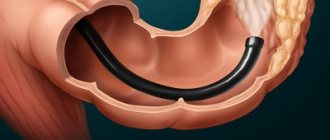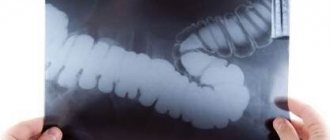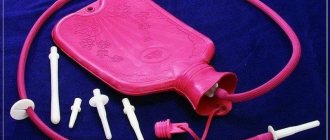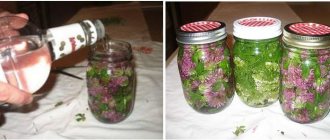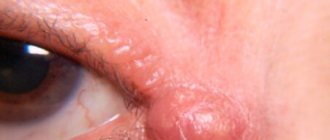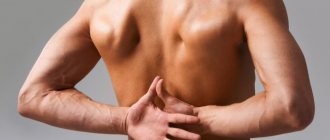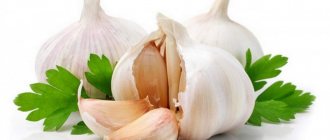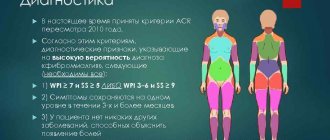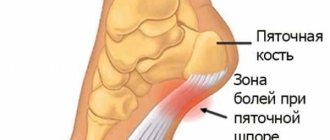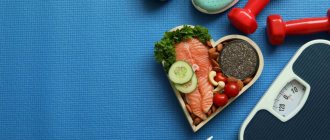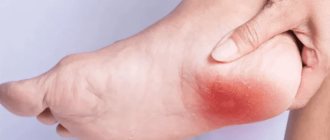Slag-free diet for 3 days
The first stage of standard preparation is changing the nature of your diet. The patient is recommended to eat only easily digestible refined foods. Therefore, 3 days before the study, it is mandatory to follow a slag-free diet.
| Can | It is forbidden |
| Eggs, cheese, sour cream, butter, yogurt and fermented milk products without additives or fillers | Vegetables in any form, including potatoes, herbs, mushrooms, seaweed. |
| Meat, poultry, lean fish (boiled, steamed or stewed) | All bakery, flour and pasta products |
| Sugar, honey (not in honeycombs) | Cereals, cereals, legumes, cereals, nuts, seeds, sesame, poppy seeds, grains, bran and other seeds, spices |
| Broths (clear, strained, tea, water, non-alcoholic, uncolored drinks. | Tough meat with cartilage, sausages, sausages, canned food, seafood |
| Allowed products and liquids must not contain small seeds, grains, seeds, bran | Fruits, berries, including dried fruits, preserves, jam, marmalade, jelly |
| Chips, hamburgers, chocolate | |
| Alcohol, carbonated drinks, coffee, compote, jelly |
The evening before the procedure and on the day of the examination itself, you should abstain completely from eating.
If the patient suffers from chronic constipation, then the diet should be started earlier (5-6 days before).
To whom and why is the procedure prescribed?
For diagnostic purposes, experts recommend regular colonoscopy under anesthesia at the age of 50+, even in the absence of symptoms, to exclude the possible presence of neoplasms. Indications for the procedure are also such manifestations as:
- discharge of blood, pus, mucus with feces;
- unexplained sudden decrease in body weight;
- constant constipation or alternating with diarrhea;
- pain in the abdomen and anus;
- discomfort, flatulence, feeling of incomplete bowel movement.
Colon cleansing with drugs
A diet before the study is always required. The next stage of standard preparation is the inclusion of drugs for intestinal lavage, which are a balanced electrolyte solution.
Preparation for colonoscopy with MOVIPREP
Moviprep has 3 convenient methods of application depending on the time of the start of the colonoscopy:
1 If the colonoscopy is scheduled for the morning (08:00 – 10:00) – a one-stage evening regimen.
Day before colonoscopy:
- Breakfast - according to the list of permitted foods and liquids,
- Lunch and dinner - only clear liquids allowed!
- 19:00 – 20:00 - take the first liter of Moviprep solution;
- 20.00 - 20.30 - drink 500 ml of permitted liquid;
- 21:00 – 22:00 - take the second liter of Moviprep solution;
- 22.00-22.30 – drink 500 ml of permitted liquid.
2 If the colonoscopy is scheduled for lunch time (10:00 - 14:00) - a two-stage regimen.
Day before colonoscopy:
- Breakfast and light lunch - according to the list of permitted foods and liquids,
- Dinner - only permitted clear liquids!
- 20:00-21:00 - take the first liter of Moviprep solution;
- 21.00 - 21.30 - drink 500 ml of permitted liquid.
Colonoscopy day:
- 06:00-07:00 – take the second liter of Moviprep solution;
- 07.00-07.30 - drink 500 ml of permitted liquid.
3 If the colonoscopy is scheduled for the afternoon or evening (14:00-19:00) - a one-stage morning regimen.
Day before colonoscopy:
Breakfast, lunch and light dinner - according to the list of permitted foods and liquids.
Colonoscopy day:
- In the morning - only permitted clear liquids.
- 08.00-09.00 - take the first liter of Moviprep solution;
- 09.00-09.30 - drink 500 ml of permitted liquid;
- 10.00-11.00 - take the second liter of Moviprep solution;
- 11.00-11.30 — — drink 500 ml of permitted liquid.
Note:
You should stop taking all liquids no later than 3-4 hours before the test.
How to prepare a solution of Moviprep:
- To prepare the first liter: dilute the contents of one sachet A and one sachet B in a small amount of drinking non-carbonated water at room temperature until completely dissolved, bring to 1 liter with water, mix.
- To prepare the second liter: repeat the algorithm from point 1 (above), using the remaining sachet A and sachet B.
The procedure is unpleasant, but practically painless, because... carried out using the latest equipment of the latest generation. The endoscope has an ultra-thin 8 mm insertion tube.
Preparation for colonoscopy with FORTRANS
If the colonoscopy is scheduled for the morning (08:00 – 11:00) - One-stage evening preparation.
Day before colonoscopy:
- Breakfast - according to the list of permitted foods and liquids,
- Lunch - only clear liquids allowed!
- 17:00 – 20:00 - during this period of time the patient needs to drink 4 liters of the prepared Fortrans solution (for a patient less than 70 kg - 3 liters), each sachet is diluted with 1 liter of water, and gradually drunk - about 1 liter over an hour.
- You can squeeze half a lemon or orange into the solution to make it taste more pleasant.
If the colonoscopy is scheduled for (11:00 – 15:00) - Two-stage preparation.
Day before colonoscopy:
- Breakfast - according to the list of permitted foods and liquids,
- Lunch - only clear liquids allowed!
- 17:00 - 20:00 - during this period of time the patient needs to drink 3 liters of the prepared Fortrans solution (for a patient less than 70 kg - 2 liters), each sachet is diluted with 1 liter of water, and gradually drunk - about 1 liter over an hour.
Colonoscopy day:
- 06.00-07.00 - drink 1 liter of the prepared Fortrans solution.
- You can squeeze half a lemon or orange into the solution to make it taste more pleasant.
Preparation for colonoscopy with EZICLEN
To properly cleanse the intestines, you need to take two bottles of Esiclene. Before taking, the contents of each bottle must be diluted with water. The patient should drink the resulting diluted solution and two more cups filled to the mark with water or an approved clear liquid (i.e., approximately 1 L) over the next two hours, as described below in the sections
Mode of application
If the time of the prescribed procedure allows, then the split-dose regimen is preferable to the one-time regimen on the eve of the procedure. A single dose regimen on the eve of the procedure is potentially suitable as an alternative regimen.
1 Two-step application mode
Day before the procedure:
The evening before the procedure (for example, at 18.00) you must follow the following instructions:
- The contents of one bottle of Esiclene should be poured into the supplied measuring cup and diluted with water to the mark (i.e. to a volume of 0.5 l).
- Over the next two hours, the patient should drink the resulting solution and an additional two measuring glasses of water or clear liquid (i.e., about 1 liter).
Day of procedure:
On the morning of the procedure, between 05.00-06.00, you must repeat the steps according to the instructions for the evening before:
- The contents of the second bottle of Esiclene should be poured into the supplied measuring cup and diluted with water to the mark (i.e. to a volume of 0.5 l).
- Over the next two hours, the patient should drink the resulting solution and an additional two measuring glasses of water or clear liquid (i.e., about 1 liter).
The full volume of the diluted Esiclene solution and an additional amount of water or clear liquid should be completed at least 2 hours and no later than 4 hours before the start of the procedure.
2 One-step application mode
(application mode for use depending on the individual needs of the patient)
Day before the procedure:
The evening before the procedure (for example, at 18:00):
- The contents of one bottle of Esiclene should be poured into the supplied measuring cup and diluted with water to the mark (i.e. to a volume of 0.5 l).
- Over the next two hours, the patient should drink the resulting solution and an additional two measuring glasses of water or clear liquid (i.e., about 1 liter).
Approximately 2 hours after starting the first dose:
- The contents of the second bottle of Esiclene should be poured into the supplied measuring cup and diluted with water to the mark (i.e. to a volume of 0.5 l).
- Over the next two hours, the patient should drink the resulting solution and an additional two measuring glasses of water or clear liquid (i.e., about 1 liter).
Carrying out a diagnostic procedure with and without anesthesia
An endoscope for colonoscopy is a thin flexible probe made of hypoallergenic material, equipped with a backlit camera, which allows you to obtain a high-quality image and display it on the monitor. Before the procedure, the patient lies on the couch on his left side with his knees tucked and, with the help of safe medications, is immersed in a pleasantly relaxing sleep. Only then the guided endoscope is carefully inserted inside and the doctor begins to examine the intestines.
Gradually, a high-precision device moves through the colon, and its folds are straightened by an air stream for a better view. If necessary, the doctor carefully removes a piece of tissue for histological examination. The entire procedure lasts approximately 15-30 minutes. After it, the patient wakes up without experiencing any pain or discomfort. After assessing his condition, the doctor allows him to leave the clinic.
Colonoscopy performed without anesthesia cannot be called as comfortable. Although the tip of the endoscope is lubricated with a special substance, pain cannot be avoided. In addition, throughout the entire procedure there is discomfort from the introduction of air to straighten the folds of the colon. Another nuance is that in a moment of painful sensation or from anxiety and fear, the patient may twitch, and this is undesirable. After completing the study, you can leave the hospital. However, judging by the reviews, for the next examination many will prefer to opt for anesthesia.
During colonoscopy under sedation (intravenous anesthesia)
It is necessary to maintain a fasting period of at least 8 hours and at least 4 hours without water. On this day it is not recommended to drive a car, operate any machinery, or make important decisions. It is advisable to be met and escorted home.
When making an appointment for gastro + colonoscopy, two-stage preparation is not suitable, since the patient must come to gastroscopy on an empty stomach, not eat or DRINK!
IMPORTANT: In case of concomitant pathology of the cardiovascular system, diabetes mellitus, renal failure, preparation with MOVIPREP is more justified.
After completing the examination and receiving the results of a colonoscopy, it is recommended to consult a gastroenterologist.
Rehabilitation
After a colonoscopy, a hospital stay is not expected; the patient leaves the hospital. Drugs administered for anesthesia are eliminated from the body within several hours. For the first half hour or hour, sudden movements should be avoided, and the feeling of fullness in the intestines is a normal possible reaction, it passes quickly.
What can be revealed
FCS with anesthesia allows you to:
- carry out differential diagnosis between chronic diseases with colitis syndrome;
- identify diverticula;
- detect polyps and other benign neoplasms and remove them endoscopically;
- detect malignant tumors (cancer) of any form at the earliest stages, when they are still small in size and limited to the mucous membrane and submucosal layer.
At the moment, FCS is the most informative, reliable and safe way to assess the condition of the wall of the large intestine and identify any neoplasms located here.
AS PART OF PREPARING FOR THE FCC, YOU NEED:
On the eve of the examination, do not eat food and take only clear liquids. It is necessary to bring the intestines to complete cleansing, therefore, a few days before the colonoscopy, you should adhere to the special diet indicated below, and also take a special drug (at the patient’s choice or as recommended by the doctor) to cleanse the intestines. Medicinal cleansing involves consuming a large volume of liquid, but this method causes less discomfort than using an Esmarch mug (enema). You should temporarily stop taking medications on the recommendation of a doctor - but vital medications cannot be canceled!
Possible complications
Colonoscopy is a safe test. The risk of complications during a diagnostic examination of the colon is minimal. The risks of surgical endoscopy of the colon are less than one percent, which allows us to speak with confidence about its safety. Complications during endoscopic examination of the colon are very rare, including:
- Allergic reactions to sedative medications.
- Bleeding after biopsy, polyp removal.
- Perforation (rupture of the wall) of the intestine.
Alternative diagnostic methods
Other tests can also be used for the early diagnosis of malignant tumors of the colon:
- Fecal occult blood test (annually). The accuracy of the study is 62–79%. Out of 10 people with colon cancer, only 6-8 will test positive. False-positive results are possible if the patient has recently eaten red meat, foods rich in vitamin C, or is taking drugs from the group of non-steroidal anti-inflammatory drugs. If the test shows a positive result, endoscopy is required to clarify the diagnosis.
- Flexible sigmoidoscopy (every 5 years) is an endoscopic examination of the rectum and lower third of the colon. It is performed in the same way as a colonoscopy, but during it, a smaller part of the intestine is examined. Helps identify 70–80% of polyps and malignant tumors in the rectum and lower colon.
- Fecal DNA testing combined with stool occult blood testing (every 3 years). Can detect up to 92% of malignant tumors and up to 42% of precancerous conditions.
- Virtual colonoscopy (CT colonography) (every 5 years) - multislice computed tomography (MSCT), during which the colon is filled with air. The detection rate of tumors larger than 1 cm using this study is 94%, polyps measuring 6–9 mm is 65%. Polyps smaller than 6 mm are not detected. If a polyp is found during CT colonography, endoscopy will still have to be performed to remove it. [9,10]
Thus, colonoscopy is the most accurate and informative method of screening for colon cancer, while it makes it possible to immediately carry out a biopsy and some therapeutic manipulations.
